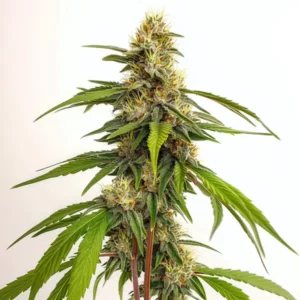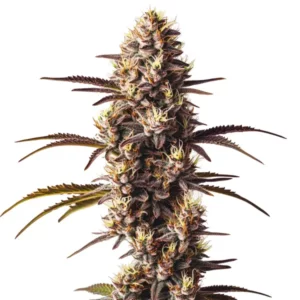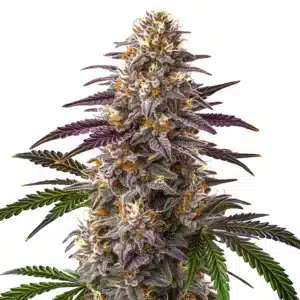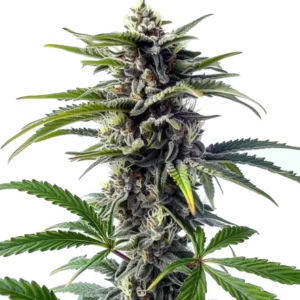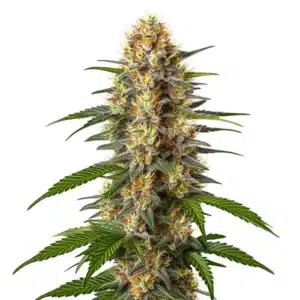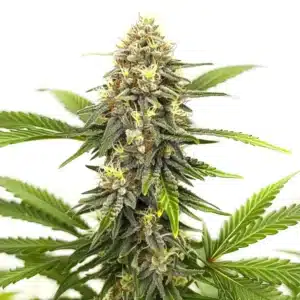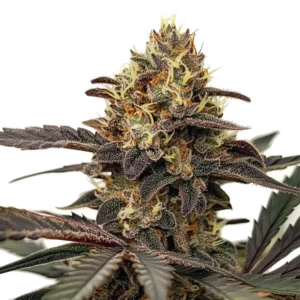
Cannabis Treatment for Epilepsy: New Research
Overview of Cannabis Treatment for Epilepsy: Historical Perspectives and Current Trends
Early Applications of Cannabis in Epilepsy Management
Historical records indicate that natural remedies, including cannabis, were used centuries ago to alleviate symptoms of epilepsy. Ancient healers prepared plant extracts to calm the nervous system and reduce convulsions. These traditional practices, though rudimentary, provided relief for many and laid the foundation for modern investigations. The use of cannabis in early treatments reflects a longstanding belief in nature’s ability to support neurological health and manage seizure disorders effectively, serving as an inspiration for contemporary research endeavors.
Traditional texts and folklore often mention the calming effects of cannabis on the brain. Ancient practitioners observed that regular use of cannabis extracts helped some individuals experience fewer and milder seizures. While these early methods lacked scientific validation, they sparked curiosity that has influenced later medical research. The historical use of cannabis for epilepsy management continues to be a reference point in discussions about natural treatment options, encouraging further scientific exploration.
Recommended Strains
Banizzle
|
|
THC | 25% - 30% (High) |
|
|
Type | Feminized |
|
|
Yield | High |
|
|
Phenotype | 55% Indica / 45% Sativa |
London Pound Cake
|
|
THC | 20% - 25% (Medium) |
|
|
Type | Feminized |
|
|
Yield | Medium |
|
|
Phenotype | 70% Indica / 30% Sativa |
Evolution in Clinical Practices and Modern Approaches
Over the centuries, medical practices have evolved significantly, and cannabis treatment for epilepsy has transitioned from traditional remedies to a subject of modern clinical research. Physicians now study its potential benefits alongside standard medications, examining dosage, safety, and efficacy. This evolution reflects a growing acceptance of integrative treatments that combine natural compounds with contemporary therapies. Modern approaches are carefully designed to improve seizure control while minimizing side effects, offering a promising alternative for those seeking additional support.
Modern approaches now combine precise scientific methods with traditional insights. Many clinics have begun using measured doses of cannabis treatment for epilepsy to supplement antiepileptic drugs. This integration aims to improve patient comfort and reduce the severity of seizures while maintaining safety standards. The use of natural treatments is evaluated with rigorous testing, and ongoing research helps optimize protocols to ensure that every patient receives balanced care tailored to their needs.
Promos & Deals
Scientific Insights into Cannabis Treatment for Epilepsy
Neurochemical Mechanisms and Effects on Seizure Control
Research indicates that cannabinoids interact with specific receptors in the brain, potentially modulating neural excitability and reducing seizure activity. Laboratory studies have shown that these natural compounds can influence neurotransmitter release and stabilize electrical activity in neural networks. This neurochemical effect may contribute to better seizure control, offering an additional layer of support when combined with conventional treatments. Such findings encourage further investigation into the biochemical pathways affected by cannabis treatment for epilepsy.
Detailed studies have revealed that cannabinoids may reduce hyperexcitability in neuronal circuits, a key factor in seizure generation. By influencing calcium channels and other molecular targets, these compounds help maintain a balanced neural environment. This mechanism supports the therapeutic potential of cannabis treatment for epilepsy and suggests that natural substances could be valuable additions to existing treatment protocols, ultimately enhancing patient outcomes.
Findings from Recent Clinical Studies
Recent clinical investigations have examined the effects of cannabis treatment for epilepsy in controlled settings. Small-scale trials report that some patients experience a reduction in seizure frequency and improved quality of life when using cannabis extracts as an adjunct to standard medications. Although these studies are preliminary, the encouraging results support further exploration of natural therapies. Researchers are working to determine optimal dosages and long-term safety to better integrate these treatments into clinical practice.
Clinical studies emphasize that cannabis treatment for epilepsy is not a standalone cure but rather a supportive measure. Patients using this therapy often report fewer side effects and enhanced overall well-being when it complements conventional drugs. Although results vary among individuals, the findings are promising and encourage continued research. Careful monitoring and personalized treatment plans remain essential to maximize the potential benefits and ensure each patient receives the most effective care.

Integrative Strategies in Cannabis Treatment for Epilepsy
Combining Cannabinoids with Conventional Antiepileptic Medications
Healthcare providers are increasingly exploring the combination of cannabinoids with standard antiepileptic medications. This approach aims to enhance seizure control while reducing the side effects often associated with high doses of conventional drugs. Cannabis treatment for epilepsy is integrated carefully into treatment plans, offering an adjunctive option that may provide additional benefits. Early observations suggest that this combination can lead to improved patient comfort and overall stability in managing seizures.
Approaches to Enhancing Patient Outcomes
Various clinical approaches focus on customizing treatment plans to maximize the benefits of combining natural and conventional therapies. Healthcare teams adjust dosages and monitor patient responses closely to ensure that cannabis treatment for epilepsy works effectively as an adjunct. These tailored strategies are developed based on individual needs and medical history, providing a more holistic approach to seizure management. This personalized method aims to improve overall well-being and offer a more balanced therapeutic regimen.
Other strategies involve integrating supportive therapies such as dietary modifications and physical activity. These additional measures complement the pharmacological effects of cannabis treatment for epilepsy by boosting overall health and reducing stress levels. Clinical practitioners advocate for a comprehensive approach that combines lifestyle changes with medication adjustments, aiming to enhance seizure control and improve daily living.
Safety and Regulatory Considerations in Cannabis Treatment for Epilepsy
Legal Framework and Policy Developments
Recent legislative changes have opened avenues for the controlled use of cannabis treatment for epilepsy. Governments and regulatory bodies are updating policies to reflect emerging scientific evidence and public interest. These legal frameworks aim to balance access to natural therapies with the need for rigorous safety standards. As a result, more clinical trials and research initiatives are being conducted to assess the benefits and risks associated with this alternative treatment option.
Policy developments are paving the way for more structured research environments. By setting clear guidelines and standards, regulatory authorities help ensure that cannabis treatment for epilepsy is administered safely and effectively. The evolving legal landscape supports both innovation and patient protection, creating a framework in which new therapeutic options can be evaluated rigorously while maintaining public confidence in medical practices.
Quality Control and Safety Protocols
Strict quality control measures are essential to ensure that cannabis products used in epilepsy treatment meet high safety standards. Laboratories conduct rigorous tests for purity, potency, and contaminants. These protocols protect patients by guaranteeing that every batch is consistent and reliable. Ongoing oversight by regulatory agencies further reinforces trust in these alternative therapies, ensuring that cannabis treatment for epilepsy is both safe and effective.
Case Studies and Community Impact in Cannabis Treatment for Epilepsy
Detailed Patient Case Studies
Individual case studies have documented instances where patients using cannabis treatment for epilepsy experienced notable improvements. Reports detail reduced seizure frequency, milder symptoms, and enhanced overall well-being. These case studies provide tangible evidence of the benefits that natural therapies can offer when integrated with conventional treatments. Personal accounts highlight the potential for cannabis to serve as a valuable adjunct, supporting a more balanced and effective management strategy for this challenging condition.
Further case studies reveal diverse responses to cannabis treatment for epilepsy. Some patients report dramatic decreases in seizure episodes, while others note moderate improvements in quality of life. These varied outcomes underscore the importance of personalized treatment plans and careful monitoring. The documented cases serve as practical examples for clinicians and researchers, highlighting both the potential benefits and the need for ongoing assessment of this therapeutic approach.
Community and Healthcare Provider Perspectives
Feedback from healthcare providers and community members has been positive regarding cannabis treatment for epilepsy. Many report improved patient comfort and reduced seizure severity when this therapy is added to conventional care. Such perspectives underscore a growing acceptance of natural treatment options and encourage further collaboration between traditional and alternative medicine practitioners. The shared insights contribute to a broader dialogue about enhancing patient care in the field of epilepsy management.
Holistic Approaches in Cannabis Treatment for Epilepsy
Diet, Exercise, and Natural Therapies
Integrating healthy lifestyle choices with medical treatment can enhance the effectiveness of cannabis treatment for epilepsy. Balanced nutrition, regular exercise, and proper hydration support overall brain health and may help reduce seizure frequency. Many patients find that combining these natural practices with their treatment plans leads to improved energy levels and reduced stress. Such holistic approaches provide a comprehensive framework for managing epilepsy and contribute to better long-term well-being.
Adopting natural therapies alongside traditional treatments offers patients a more proactive approach to seizure management. By incorporating dietary improvements and exercise routines, individuals may experience enhanced physical and mental well-being. These lifestyle modifications complement the pharmacological effects of cannabis treatment for epilepsy, creating a synergistic effect that supports overall health and reinforces personal well-being.
Mind-Body Practices and Wellness Integration
Mind-body practices such as meditation, yoga, and deep breathing are increasingly incorporated into treatment plans for epilepsy. These practices help reduce stress, promote relaxation, and enhance mental clarity, which may indirectly improve seizure control. Integrating such techniques with cannabis treatment offers a holistic approach that nurtures both physical and emotional health, providing a natural complement to traditional interventions and contributing to overall wellness.
Integrating wellness practices into daily routines can significantly improve the emotional and physical aspects of epilepsy care. Simple activities like deep breathing, gentle yoga, or mindful walking help reduce anxiety and enhance relaxation. These natural techniques are designed to work alongside medical treatments, offering patients a more balanced lifestyle that supports consistent seizure management.
Practical Considerations in Cannabis Treatment for Epilepsy
Key Points for Patients
Patients considering cannabis treatment for epilepsy should consult with knowledgeable healthcare professionals to determine suitability and dosage. It is important to verify the quality and origin of cannabis products, as strict quality control is essential for safety. Being informed about potential drug interactions and side effects can help patients make better decisions. Thorough communication with medical providers ensures that treatment plans are tailored to individual needs and conditions.
Practical considerations also include understanding local regulations and access to certified products. Patients are advised to remain cautious and seek updated information from reliable sources. Regular follow-ups with healthcare providers can help monitor progress and adjust treatments as necessary. This proactive approach is vital in ensuring that cannabis treatment for epilepsy is both effective and safe, ultimately leading to improved quality of life.

Additional Considerations in Cannabis Treatment for Epilepsy
Implementation Challenges
Implementation challenges remain a significant factor in adopting cannabis treatment for epilepsy. Variability in product quality, limited access to certified providers, and differing legal standards across regions can complicate integration into existing healthcare frameworks. Addressing these challenges requires coordinated efforts from regulatory bodies, medical professionals, and the cannabis industry. Focusing on improving quality assurance and expanding research can help ensure that this natural therapy is safely incorporated into treatment plans for those in need.
FAQs about cannabis treatment for epilepsy
What benefits does cannabis treatment for epilepsy offer?
Clinical research indicates that cannabis treatment for epilepsy may reduce seizure frequency, lessen symptom severity, and improve overall well-being. Many patients feel calmer and more balanced when cannabis compounds complement their conventional medications. This supportive treatment option, when carefully managed, can significantly enhance quality of life while easing the challenges associated with epilepsy, providing measurable improvements and renewed hope for daily living.
How is cannabis treatment for epilepsy integrated with conventional care?
Medical professionals typically combine this natural therapy with standard antiepileptic drugs to optimize seizure control and minimize side effects. The treatment is carefully monitored and adjusted based on individual responses, ensuring that both therapies work synergistically. This integration offers patients an additional supportive measure that complements traditional treatments effectively, improving overall health and daily functioning.
What steps ensure safety in using cannabis treatment for epilepsy?
Strict testing, quality control, and adherence to regulatory standards are fundamental. Healthcare providers conduct thorough assessments of cannabis products to verify purity, potency, and consistency. These measures, combined with ongoing monitoring of patient responses, help minimize risks and ensure that the therapy remains both safe and effective as an adjunct to conventional epilepsy treatments.


